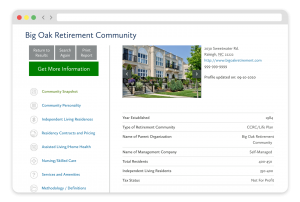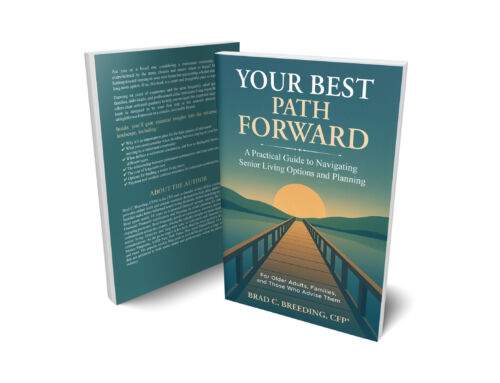The future of senior living is one of the most talked-about topics in the industry — and for good reason. The next generation of older adults brings new expectations and preferences when it comes to retirement lifestyle and housing. And this topic is especially pertinent as the oldest baby boomers turn 79 this year — an age when many older adults begin to seriously consider their senior living options.
If you listen to recent podcasts or have read articles on the industry’s future, the conversation almost always centers on the physical model of housing for older adults and what needs to change to attract the next generation. And while this is an important part of the conversation, there is an equally important aspect — perhaps even more important — that is almost completely overlooked in these discussions.
>> Related: How Senior Living is Evolving to Meet Future Demand
Fears of feeling “warehoused”
When you listen to the concerns voiced by some older adults about the current options offered by the senior living industry, you’ll sometimes hear things like, “I don’t want to be ‘warehoused.’”
To be sure, part of this concern fits into the physical campus/design side of the conversation. Yet, this fear of feeling “warehoused” is likely driven equally (or perhaps even more) by concerns about how a retirement community resident might be treated.
- Will they feel like a number?
- Will their unique needs and preferences be ignored?
- Will they be neglected or abused by nurses or caregivers?
According to U.S. Census Bureau data, as of 2023, approximately 44 million U.S. households reside in multifamily housing, which includes apartment buildings, condominiums, townhouses, and duplexes. This equates to nearly a third (31%) of all households in this county. Yet you rarely hear younger adults say they don’t want to move into an apartment because they don’t want to be “warehoused.”
This suggests that older adults’ apprehensions about moving to a multi-family retirement community setting are not purely a concern about the physical layout of the campus. Rather, their fears may be a reflection of news articles or word-of-mouth stories about residents being treated poorly … or even abusively..
A sense of lost independence
Closely related to the issue of feeling warehoused is the common fear of losing independence. Again, this may not be based so much on the physical design of a retirement community campus. Rather, it may reflect potential concerns about how residents are treated.
The concept of “independence” means different things to different people. For some, it may mean remaining physically independent, without needing assistance to perform activities of daily living. But for others, maintaining independence is more about controlling decisions and schedules. The fear that many older adults have about senior living is that they would lose this form of independence if they moved to a retirement community.
>> Related: What Does “Losing Independence” Mean To You?
Cost without value
Aside from the above, there are other stories about the treatment of senior living residents that are a major turn off to potential residents. Many of them are related to the value — or lack thereof — offered by some retirement communities.
There are always going to be costs associated with moving, including moving to a retirement community. If a person feels that they are getting a good value for that cost, they are much more likely to be content with their decision. However, if they feel that the cost is not justified by the services and amenities, or by how they feel treated, they would be justified in their dissatisfaction with their decision and the retirement community.
There are a variety of ways retirement communities can miss the mark when it comes to delivering value to residents for the price they pay. Many times these issues stem from cutting financial corners while still charging residents full price.
One common example, particularly in recent years, is staffing shortages that lead to reduced services. There are even occasional instances of residents being charged for higher levels of care when they were no longer needed — simply because no employee took the time to amend the resident’s service plan (and related charges). Such situations border on being financially exploitative.
>> Related: The Cost of a CCRC vs. the Value to Residents
The value of keeping promises and respecting autonomy
There is no doubt a need for innovative new senior living designs and concepts. But it’s important not to lose sight of the fact that what the next generation of retirement community residents wants may not purely rely on physical design. Instead, their focus may be more on how they are treated — how their preferences are honored — the value they feel they are getting for their money. Do they trust that the organization will always have their best interests at heart? Do current residents tell them they feel this way?
Imagine two retirement communities that cost roughly the same price. One has a reputation for cutting corners to pinch pennies, ignoring residents’ wishes, or even charging full-price for services and amenities that are not living up to residents’ expectations. The second community is known for treating residents like royalty, with staff members who do what they say they will do when they say they will do it. The second community also gives residents a voice and empowers independent decision-making.
Which retirement community do you think offers real value for the price? Which one would you choose to live in?

FREE Detailed Profile Reports on CCRCs/Life Plan Communities
Search Communities






